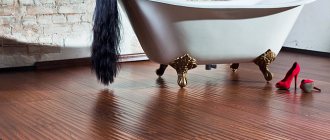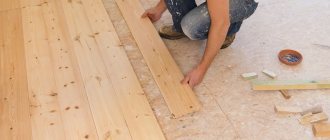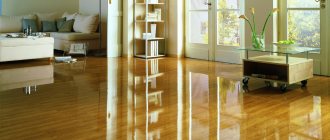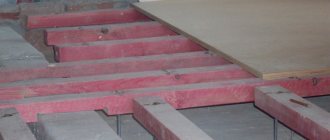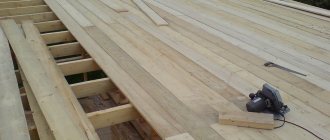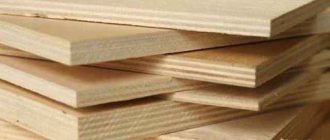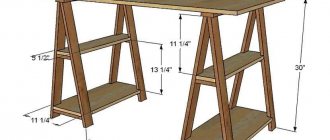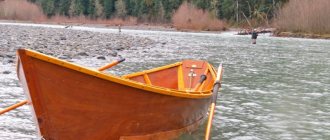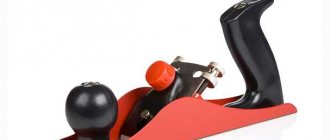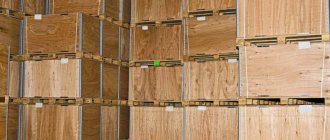SHARE ON SOCIAL NETWORKS
FacebookTwitterOkGoogle+PinterestVk
In home improvement, high-quality and beautiful flooring is of great importance. It largely determines the appearance of the room and at the same time must withstand serious loads. Let's consider what a floorboard should be like: sizes, types, types of wood, as well as some features of working with different types of material. This will allow you to understand all the intricacies and subsequently purchase a suitable option.
Floorboards can have different sizes and be made from different types of wood
Floor boards: types of material used as flooring
Several types of wood flooring are used to finish the floor. And each of them has its own characteristics, advantages and disadvantages.
Beautiful and high-quality flooring not only determines the appearance of the room, but also withstands heavy loads
Classic floorboard: properties and characteristics
This type of material can be used not only as a rough coating, but also as a finishing coating. It is made from solid wood or by gluing several elements together. Visually, this material looks like a milled board. To make a floor from a floorboard, you can use ordinary material or one made according to European standards, the so-called Euroboard. For its production, special technologies and special European equipment are used.
The quality of the second type of floor covering is usually noticeably higher. On the one hand, it has lower humidity, and on the other, high standards do not allow the presence of even small defects, for example, holes, knots, stains, etc. This surface is smoother, ideally polished, but this material is noticeably more expensive.
Obviously, it is better to purchase a Euroboard if you plan to use it for a finished floor. But ordinary material is more often used just as a rough covering, on top of which laminate or linoleum will be laid. Whether it is worth spending money on buying Euroboards is up to each buyer to decide for himself. It is recommended that you familiarize yourself with both material options to choose the most suitable one.
Solid wood flooring has a beautiful appearance
Laying this type of floorboard involves joining using a locking connection: the groove and the tongue converge with each other. This ensures high durability of the coating and an attractive appearance. Even if some drying occurs over time, the floor will still look good.
Helpful advice! If you have to work with a large board, for example, 5-6 m long, it is best to give preference to material with cone-shaped ridges. This makes installation much easier and faster.
Solid wood floorboards may contain knots, resin, and small bluish spots
This type of floorboard is always fastened into a groove, so the only question is how to make the installation procedure as simple as possible. Rectangular tenons are common, but mating them with grooves is quite difficult, especially if there is even a slight curvature. Laying closely in this case is a complex procedure. Sometimes, in order to make the task easier, the boards are sawn into pieces. But the appearance of the floor covering is greatly deteriorated.
A good option for fixation is quarters. In this case, one of the boards is cut half the width at the top, and the other - in the same way at the bottom. This is a very simple way of fixing, and this floor looks really beautiful.
You need to understand that solid wood boards have slightly different standards: the presence of knots, resin, and small bluish spots is allowed. So it is often used as a rough coating, simply laid end-to-end and secured with nails.
Glued boards for flooring: high cost, increased strength
Glued laminated boards are made from several elements, glued together in such a way as to provide additional strength. In this case, the fibers are arranged so that throughout the entire period of use, each element does not lose its original appearance and characteristics.
Glued-laminated floorboards have a high price due to the complex manufacturing technology
Drying of such boards is almost completely eliminated, which allows the floor to remain level. Laying such a coating is a rather labor-intensive procedure. In addition, laminated wood has a high cost due to complex manufacturing technology.
The main advantage of glued boards is its high resistance to heavy loads. That is, in rooms where there is heavy furniture or high foot traffic, this option will be simply irreplaceable. In addition, this material is often used to decorate children's rooms to provide the floor with an attractive appearance and the necessary durability.
Due to its structure, laminated boards tolerate moisture well. And although it should not be placed in a bathroom or bathhouse, where the humidity is too high and almost constant, it is perfect for ordinary living spaces, even for the kitchen.
Terrace board: an excellent option for rooms with high humidity
The decking board is characterized by a special wavy surface. This is an ideal option for arranging rooms with high humidity, for example, a bathroom, bathhouse. In addition to being highly resistant to moisture, the rough surface reduces the risk of slipping and falling on wet floors.
As the name implies, deck boards are also used for arranging terraces, that is, places that are partially in contact with both the street and the house. This material is also called garden parquet, since it can actually be laid in the garden, in the open air. It does not lose its characteristics under the influence of various atmospheric phenomena.
Among the features of these boards, it is worth noting the presence of special compensation grooves, which are small in size (only a few millimeters), but perfectly relieve excess stress. This is necessary due to exposure to precipitation and sun.
Important! Installation of decking boards is almost never done end-to-end, since space is needed for the free expansion of the elements. Usually small gaps are left between the boards, which over time, depending on external factors, can disappear and reappear.
Array
This approach implies the presence of a lock on the edges of the boards, on one side they have a groove, and on the other - a ridge. It is noteworthy that this design allows for maximum reliability even when the boards dry out, which gives them even greater strength.
The optimal size of such boards reaches 5-6 meters, although many workers also lay three-meter products. The important thing is that short boards will create an unsightly cut-off appearance.
Floorboard: sizes and recommendations for selection
The first criterion for choosing a floor board is the specifics of its further use (for rough or final floor covering). Before you go shopping, you need to decide where and for what the material will be used. In addition, the length and width of the floorboard is of great importance. After all, the service life of the coating and its resistance to loads depend on how correctly the size is selected.
How to choose the size of the board depending on the length of the room:
| Room length (m) | Board thickness (mm) | Distance between joists (mm) | Section of timber for logs (mm) |
| 2 | 20 | 300 | 110x60 |
| 3 | 25 | 400 | 150x80 |
| 4 | 30 | 500 | 180x100 |
| 5 | 35 | 600 | 200x150 |
| 6 | 40 | 700 | 220x180 |
The length of the board should be selected in such a way as to ensure a minimum number of joints and minimize the need to cut the boards. The less waste the better.
If we are talking about arranging a country house, the thickness of the material used should be at least 35-50 mm. 35mm floorboard is considered standard and is often used in homes. In the case of finishing floors with increased loads, for example, in a gym or where many people pass daily, it is recommended to use 50 or 70 mm floorboards.
The length of the board must be selected so as to ensure a minimum number of joints
The width of the board should be selected with a small margin. This allows for periodic sanding of the floor to return the surface to its original appearance. But the required length of the board should be determined as accurately as possible.
Important! The wider the board, the faster it will lose its original shape. Narrow products in this regard are more durable and practical. This is why a wide floorboard is not always preferable to a narrow one.
Laying floorboards
The boards are laid on the floor in three stages:
- Installation of lag.
- Laying waterproofing and insulation.
- Installation of finishing floor covering.
When laying the floorboards, ventilation holes are also installed.
Initially, determine the distance between the lags. The optimal distance is 60 cm. The logs are laid out across the length of the boards. The work is carried out level, then in the next stages of installation it will be easier to work. At the second stage, additional waterproofing and thermal insulation are installed. At this stage, the material is treated with special means.
At the third stage, the wood is installed. Laying begins with a gap of 10 mm from the wall. The gap is necessary because natural wood is flexible and flexible. The first floorboard is laid with a tongue and groove to the wall and secured with self-tapping screws. The reliability of the floor surface depends on the quality of the tongue and groove fastening.
Then one board is applied to another and inserted into special phases. When the boards need to be laid in two rows, a slight offset is made between them, which provides greater strength.
The resulting gap between the material and the wall is left and covered with a plinth. After this, the flooring is considered to be installed. Any material can be laid on the floor. The design of subsequent finishing depends only on the preferences of the home owner.
If you purchase high-quality lumber and install tongue-and-groove floorboards according to the rules, the wooden floor will last for several decades without repair.
How to know which floorboard is good
For the convenience of buyers, there is a special classification of wood by type and class, which makes it easy to select the required material.
Wood classification table by types and classes:
| Class | Quality |
| Extra | Maximum smooth surface without knots or any defects |
| A | Smooth surface without cracks or chips. Minor knots are allowed, no more than every 150 cm. Small blue spots may occur, no more than two surface cracks, resin |
| IN | No more than 4 knots per 150 cm, no more than 2 surface cracks, light defects and damage, resin |
| WITH | The lowest class, as a result of which the presence of surface cracks, 2 knots, contrasting color stripes, blue stains and even some mechanical damage is allowed |
Understanding what types of boards there are, you can easily choose the option that is suitable for a particular type of housing. After all, it is completely pointless to overpay for extra-class if you plan to rough-finish the floor, and it is also not recommended to make the final coating from a low-quality material. The table will help you decide on the required class of material, choose it wisely and plan costs.
Quality classes
Enterprises develop technical specifications (TS) based on GOSTs and regulatory requirements.
They provide quality regulations. There are generally recognized classes of boards:
- Extra. The products do not have a single flaw on the surface. The boards are smooth, with clearly defined dimensions. The cost of such a board is high, because it is difficult to find areas without knots in a fallen trunk in order to get closer to the standard.
- Class A. Allowed per linear meter of lumber is 1 live knot (without falling out) and a minimum number of cracks not to the full depth. The middle part of thick logs is often used for production.
- Class B. Allowed for 2 knots or resin pockets per linear meter, one crack (up to 3 cm) or chip, as well as vague darkening in the form of individual spots.
Class C is considered the lowest quality . Up to 4 knots or resin pockets, chips, unevenness, and cracks are allowed per linear meter. They allow violation of the geometry of the groove or protrusion, and the curvature of the boards.
Types of floorboards depending on wood
Flooring can be made from a wide variety of woods. Before giving preference to one or another option, you need to familiarize yourself with the differences and characteristics of the different options. Only then will the choice made be optimal.
The floorboard can be made of pine, fir, oak, alder, cedar, linden and aspen
Coniferous trees. The most popular and sought-after option, the price and quality of which are considered optimal. As for spruce and pine, floorboards made from these species contain a large amount of resins, which allows it not to collapse under the influence of moisture and prevents the occurrence of mold.
Fir is also used to make boards, but it contains noticeably less resin, so it additionally requires treatment with antiseptic agents.
Coniferous wood smells good - and many people like it. In addition, this material has excellent vapor permeability, which maintains an optimal level of humidity in the room.
Oak. Oak floorboards have long been famous for their strength and long service life. Even severe exposure to moisture has virtually no effect on this material, and rot, fungi and mold do not occur. In addition, wood perfectly retains heat and insulates from noise. Therefore, despite the high cost, such an investment is completely justified.
Oak floorboards have always been famous for their durability and very long service life
Alder and aspen are not very strong and durable options. However, this material is safe for health, so it is often used in children's rooms, home saunas and baths. Where the floor is subject to heavy loads, it is better not to use such wood.
Linden. It is extremely often susceptible to rotting and the formation of fungi, so it will definitely not be possible to do without treatment with an antiseptic. But this material is inexpensive and has good thermal insulation properties, a beautiful structure and a slight pleasant smell.
Siberian larch. An extremely diverse material that has 12 shades. Strong and durable larch is resistant to moisture, does not rot or mold. The pleasant aroma it releases is a natural antiseptic, which allows you to maintain a healthy microclimate in the room.
Cedar wood is characterized not only by strength and stability, but also by its unusual, beautiful structure. The essential oils contained in its composition maintain a healthy microclimate in the room. The high cost of this material quickly pays off due to its unique characteristics.
Cedar boards are characterized not only by strength, but also by a very beautiful texture.
Laying the floorboard largely determines not only the appearance of the room, but also the characteristics of the microclimate in it, because the thermal insulation of the floor and the ability of the material to pass air are the most important selection criteria. In addition, the durability of wood allows you not to worry about the safety of the coating.
Content
A floorboard is a profile part made of wood, which is intended for covering the floor. Externally, it looks like a milled board, which is made of a massive piece of wood. This, by the way, is the main difference between a floorboard and a parquet, since the latter is obtained by gluing together several thin layers.
It is obvious that the material from which the floorboards are made is exclusively natural wood. Moreover, it must be high quality wood - without flaws, knots, blackening or cracks. Thanks to the natural material, floorboards are an environmentally friendly floor covering that is not capable of causing allergies.
How many cubes are there in a floorboard and how to figure out how much it is: 1 cube of material
Floorboards, like all other lumber, are measured in cubes. However, not all buyers understand how many boards are contained in 1 cube and how to determine how much material is needed for a particular room. Let's look at how to deal with these issues using a simple calculation example.
To calculate the amount of material in 1 m³, you need to know the volume of one board. Determining this is quite simple: the thickness of the board is multiplied by its width and length. As an example, consider a product with dimensions of 35x100x6000 mm. For convenience, all indicators need to be converted into meters and multiplied: 0.035 * 0.1 * 6 = 0.021 m³ - as a result of performing arithmetic operations, we found out that the volume of one board is 0.021 m³.
To find out the volume of one board, you need to multiply the thickness by the width and length
Then, using simple calculations, we determine how many units of material of this size are contained in one cube of floorboard: 1/0.021 = 47.62 pcs.
For the convenience of buyers, there is also a special table of standard indicators, which shows how many boards 6 meters long are in one cubic meter.
| Board size (mm) | Volume(m³) | Quantity per 1 m³ (pcs.) |
| 25x100 | 0,015 | 66,6 |
| 25x150 | 0,0225 | 44,4 |
| 25x200 | 0,03 | 33,3 |
| 40x100 | 0,024 | 41,6 |
| 40x150 | 0,036 | 27,7 |
| 40x200 | 0,048 | 20,8 |
| 50x50 | 0,015 | 66,6 |
Note! For convenience, the number of boards in one cubic meter is usually rounded down. When deciding how to calculate the number of boards for the floor, you should definitely take into account that it is necessary to purchase products with a reserve - from 15 to 30%. This will allow you to avoid unpleasant moments associated with a shortage of material, especially since some of it is usually rejected, and this is a completely normal phenomenon.
We invite you to familiarize yourself with our range of materials
Floorboard - Extra grade
Wood Larch Width 120 mm Thickness 27 mm Length 3 m Qty.
in pack 4 things. 3400 rub/m2Floorboard – Prima grade
Wood Larch Width 120 mm Thickness 27 mm Length 3 m Qty.
in pack 4 things. 3000 rub/m2
Wet and dry floorboard: required moisture content of lumber
If we are talking about a living space, it is enough for the humidity of the floorboard to be between 12 and 14%. If it is necessary to equip a bathhouse or sauna, then this value should be higher - 20-25%. This is due to the fact that well-dried lumber under the influence of moisture will warp, deform, and swell.
The floorboard for a living room should have a humidity of 12 to 14%
A serious mistake is to buy lumber that is damper than necessary, hoping that it will dry out by the time it is laid. Attempting to dry the boards yourself may cause them to become deformed. In order to properly dry the material, it is necessary to use special chambers in which a certain temperature is maintained. And the time of such drying should be strictly limited.
Related article:
Engineered flooring: a great way to decorate your home without breaking the bank
What it is and how it differs from parquet. Main characteristics of flooring, advantages and disadvantages. Leading manufacturers.
It is almost impossible to check the moisture level in wood yourself. To do this, you need to have a special device - a wood moisture meter.
Material that was collected between autumn and winter is considered to be of higher quality. This is due to the high content of resins and tannins. They reduce the likelihood of deformation and allow products to maintain their original appearance and size.
Video description
How to install logs for a wooden floor, watch the video:
Preparing the boards
Even kiln-dried lumber needs acclimatization to the conditions in which it will be used. Therefore, it is advisable to bring the floorboard into the house in advance and let it lie for several days. But this can only be done after all wet work has been completed - installing screeds, plastering walls, so that the wood does not absorb moisture evaporating from the solutions.
Then the boards are sorted, putting the deformed ones aside and choosing the smoothest and cleanest ones. Products that are not of the best quality can be used for wooden flooring in less significant rooms or for laying along walls where they will be hidden by furniture.
For reference! If the boards are of different widths, then narrow floorboards will deform less when drying.
After sorting, the lumber is treated with an antiseptic and left to dry. It is enough to carry out such processing only for the back side and ends, since the finished flooring will be subjected to sanding and protective and decorative finishing.
Antiseptic treatment of lumber Source myosu.ru
Choice of material: floorboards, tongue-and-groove and non-groove
In order to choose the right material, regardless of the features of its further installation, it is necessary to pay special attention to several main aspects:
When choosing a tongue and groove board, you need to carefully examine the places of the interlocking joints
- It is necessary to check the compliance of all geometric parameters: the width, length and thickness of all boards must be the same. It is worth inspecting the edges - they must also be even and smooth, and not have defects at the places of further joints.
- If we are talking about tongue-and-groove material, it is important to carefully examine the places of the interlocking joints. It is necessary that the groove is deeper than the height of the ridge. This is a mandatory condition, because if the ridge is larger than the groove, gaps will form during joining.
When purchasing a large amount of material, it is simply impossible to check each board. In this case, you can limit yourself to inspecting randomly selected samples, and it is also worth requesting documentation and certificates confirming the appropriate quality of the material. In addition, you can only make purchases from trusted sellers who have a decent reputation and provide truly high-quality products.
What to look for when choosing
The moisture content
is taken into account .
If you purchase lumber for a living room, a value of 12% is sufficient. For a wet bath, sauna, take a board with an indicator of 20 - 25%. This is explained by operating conditions - in a damp climate, the material will absorb water and become deformed. Features of choice:
- Pay attention to the thickness of the boards. For housing, a thickness of 20 - 25 mm is sufficient, since there is no heavy load in the rooms. For corridors, verandas, garages, use the parameter 30 – 35 – 40 mm in order to be able to scrape the surface during repairs.
- Check the dimensions are correct . The uniformity of edges and warping of elements are taken into account. The products are inspected for fiber delamination, the presence of mold, and rot at the ends.
Valera
The voice of the construction guru
Ask a Question
It is a mistake to purchase wet lumber in the hope that it will dry by the time of installation. Self-drying will lead to deformation, since there are no chambers where gradual and uniform release of moisture occurs.
Installation of floorboards: features and secrets of technology
Regardless of whether the flooring will be laid by a specialist or the work is done independently, it is worth familiarizing yourself with the technology and features of this process in any case.
If you will be installing the floorboard yourself, you must first study the technology and features of this process.
Selecting the optimal thickness of the floorboard and base for installation
Flooring boards are a fairly versatile material that works well with a base such as:
- concrete floor;
- plywood;
- logs;
- old wood or parquet floor.
The main thing that is necessary for high-quality installation of a wooden floor is to fill the free space between the new coating and the base. Typically, mineral wool is used for this purpose, which provides additional insulation and sound insulation. In addition, cotton wool does not allow excess moisture and cold to pass through. This is very convenient, especially since you can even lay it directly on concrete.
It is important to understand that the smaller the thickness of the board, the more it will tend to sag under loads. This means that the base for thin material must be made reliably, since floorboard 36 requires a more frequent arrangement of lags than floorboard 40. Products of any thickness can be used as flooring (a wide range of boards allows this).
The thinner the board, the more it will sag under loads.
Self-laying floorboard technology
The design of the floorboard is easy to install. Usually special grooves are provided for this. If you don't have them, you can use floorboard screws to secure the covering.
Important! The main laying rule that must be followed: the boards must be positioned strictly across the movement. This will reduce the load while walking and extend the life of the floor.
If you constantly walk on one long board, then over time it will become unusable in the place where the greatest load was. If the products are positioned crosswise, the load will be distributed across different boards. Due to this, the service life of the coating will increase.
The installation of the first element should be performed near the far wall. In this case, the floorboard, the tongue of which is inside (near the wall), will easily connect to the next one. To fasten the first element, self-tapping screws are also used, which are directed at an angle of 45 degrees. Thanks to a curved screwdriver, the self-tapping screw can be driven deeper into the wood.
If you fasten the board with self-tapping screws, its fixation will be more reliable
The second board usually fits easily into the groove of the first. To ensure a strong and even fastening, a rubber hammer is most often used. The surface will ultimately be perfect if each subsequent board is leveled relative to the previous one. A level is used to check. If necessary, you can place pieces of bars underneath.
After attaching the last board, its excess groove can be removed using a jigsaw, and then the cut area can be cleaned. Then all that remains is to sand the floor and cover it with varnish, stain or mastic.
Helpful advice! To more securely fix the boards to the floor, they can be secured with self-tapping screws. The caps are then hidden using sealant and, like the rest of the surface, varnished.
Features of laying floorboards on joists
Installation, which involves the use of logs, is more complex and requires high precision in all work. First of all, it must be said that logs are wooden blocks that are positioned horizontally. The floorboard itself is mounted across them. Often, not special beams are used as lags, but ordinary beams, which are used to overlap between the first and second floors.
Installation of floorboards on joists is more complex and requires high precision in work
The first thing you need to pay attention to is the distance between the floor joists. The table given a little earlier will help you choose the best option, taking into account the size of the existing board. Floor joists, the size and distance between which are selected correctly, can provide additional strength, thermal insulation and evenness of the final coating.
Regular dowels are used to fasten the logs, so there is no need to buy special anchor bolts. If fastening is carried out on a concrete floor, the logs are drilled through. Plastic tips are hammered into the concrete, into which self-tapping screws are then screwed.
Sometimes logs are secured using mortar (however, this option is unacceptable for plywood). The joists are poured directly on the spot with a small amount of the mixture. This allows you to achieve the required monolithicity of the coating, without having a negative impact on the timber itself.
You can attach the board to the joists using regular nails.
Fixing the floorboard with construction adhesive
The floorboard can be glued to a special construction adhesive. Typically an epoxy compound is used for this. When this glue hardens, it becomes very hard and durable. Sometimes, instead of an epoxy composition, a dispersed or polyurethane solution is used. At the same time, the technology for installing the board remains the same as in the case of a locking connection.
How to fix the floorboard must be decided based on the available data and taking into account the characteristics of the base. For example, sometimes it is better to give preference to a floorboard that is shorter than the length of the room. This allows you to smooth out height differences in the room, which is impossible when installing very long products.
Selecting a suitable floorboard and following the rules of installation technology allows you to create a beautiful and high-quality floor covering. In the bedroom, in the children's room, in the kitchen and even in the bathroom, such a floor will look great and fully perform all its tasks for many years.
Flooring rules
The process of installing wooden flooring consists of several stages.
Preparing the base
The board must be ventilated, so it is not laid on a solid base, but on joists or beams. They must also be dry and thick enough to support the load.
The following are used as support beams:
- thick boards placed on edge;
- bars;
- debarked round timber with the top side beveled into a plane.
The cross-section of the logs depends on the installation method - on a solid concrete base or on support posts. And also on the length of the span between them. Exact numbers can be found in SNiPs and reference literature.
Before laying the logs on brick or concrete columns, they are covered with a double layer of roofing material for waterproofing. You can place cuttings of boards under the logs to level them horizontally. Both joists and linings are impregnated with antiseptic before installing plank floors.
Areas of use
Boards are widely used in construction work.
Frame structures. Frame house construction has become widespread these days. Its main advantages are the speed and ease of installation of such structures. When constructing frame supports, you cannot do without boards. In this area, any type of lumber is used - dry or raw, edged or planed, everything depends only on the planned construction time and budget. If you have enough time, you can purchase boards with natural moisture content and dry them yourself at the construction site.
